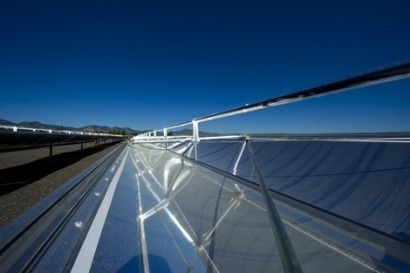
CSIRO has managed to generate supercritical steam at the highest temperatures ever achieved outside of fossil fuel sources. The process represents a breakthrough for solar energy which could foreseeably be used to drive the most advanced power stations in the world, currently only possible using coal or gas.
“It's like breaking the sound barrier” said CSIRO Energy Director Dr Alex Wonhas. “This step change proves solar has the potential to compete with the peak performance capabilities of fossil fuel sources. Instead of relying on burning fossil fuels to produce supercritical steam, this breakthrough demonstrates that the power plants of the future could instead be using the free, zero emission energy of the sun to achieve the same result.”
Supercritical solar steam is produced after water is pressurised at enormous force and then heated using solar radiation. Currently, around 90 percent of Australian electricity is generated using fossil fuel sources, but only a small number of the country’s power stations are based on the use of supercritical steam.
The world record for supercritical steam was set in May 2014 when a pressure of 23.5 megapascals (a measure of force per unit area) was reached with temperatures of up to 570 degrees Celsius. If the world’s commercial solar thermal power plants, which currently use subcritical steam, could move to supercritical steam it would greatly increase efficiency and lower costs.
CSIRO’s $5.68 million research programme is supported by the Australian Renewable Energy Agency (ARENA) and is part of a wider collaboration with Abengoa Solar to develop advanced solar storage in order to provide solar electricity at any time day or night. CSIRO’s Energy Centre, at Newcastle, New South Wales. It includes two solar thermal test plants featuring more than 600 mirrors (heliostats) directed at two towers housing solar receivers and turbines. There is still a lot of work to be done before the technology is ready for commercialisation, but according to ARENA CEO Ivor Frischknecht the new breakthrough brings solar thermal energy a step closer to cost competitiveness with fossil fuels.
For additional information:

